April 27, 2020
35mm, 50mm, 85mm Comparison | Lens Review

For photographers, like myself, who shoot primarily with prime lenses, there are several great lens options to choose from for portraiture. With so many lens options out there, how do you know which to use, specifically for headshots? The focus of this comparison review will be on the three focal lengths that I find most photographers prefer – the 35mm, the 50mm, and the 85mm. Truth be told, this review was part “experiment” for me. I wanted to see how much of a difference there would be between my three favorite lenses when used specifically for headshots. The differences I found reinforced my preferences on how and when I use each lens. Even though there is some crossover in how I use these lenses, each shines best when used for its intended purpose!
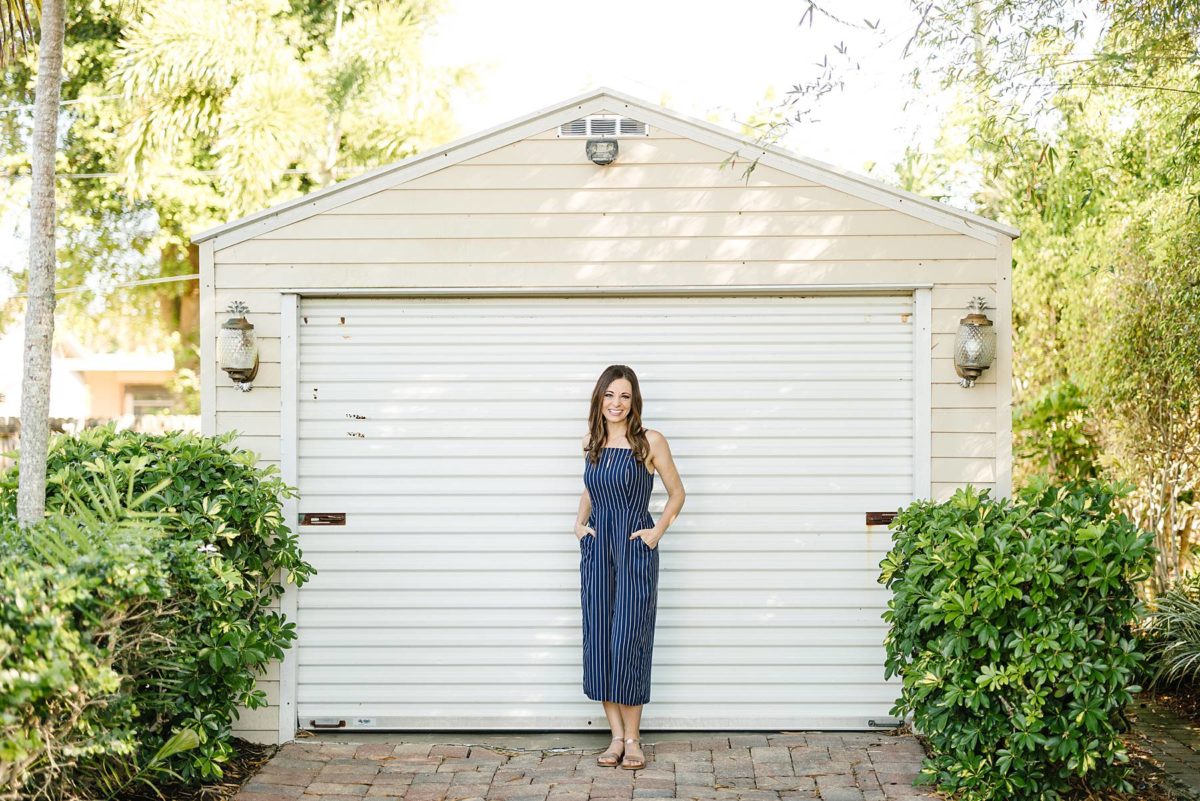
Beginning in the middle of the three focal lengths, a 50mm lens is designed to portray subjects similarly to how the human eye sees the world, and thus is commonly referred to as the “standard” focal length. When using this focal length, the distance the background appears to be from the subject is about the same distance as the human eye would perceive it. The background doesn’t get “pulled closer” to the subject nor does the image appear to “stretch” its subject’s proportions.

The 50mm focal length is also wide enough that full body shots are easy to capture as well as some of the context surrounding the subject. Using a 35mm lens will include even more context while using an 85mm will minimize context. It should be noted that when using the 50mm focal length, the photographer will be standing very close to the subject, thus it is important that the subject feels comfortable with the photographer, especially when photographing young children. Photographers will also need to take into account the subject’s background as it will not be completely blurred out when using the 50mm focal length. For photographers just starting out, I would highly recommend a 50mm lens as a first lens investment. It is the most versatile of the three focal lengths allowing for both context photos and portraits.
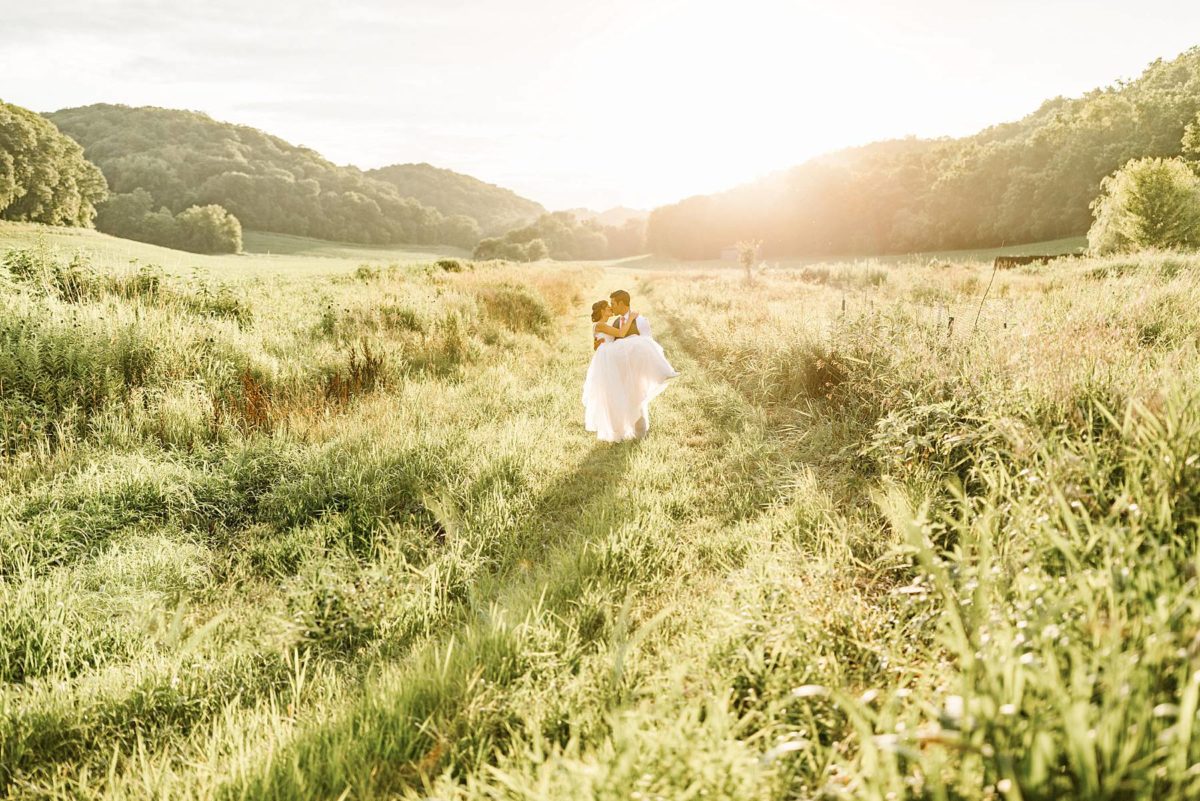
The 35mm lens has also been a popular first choice amongst aspiring photographers. It is very similar in perspective to the default lens of an iPhone which may be one reason new photographers are accustom to this focal length. When using this lens, the background seems to get “pushed farther back” and appear smaller. The image will also include more of the foreground as it is a “wider” (or more zoomed out) focal length. It is one of my most used lenses on a wedding day for context and candid photos as it is wide enough that I can easily capture moments as they are happening around me.
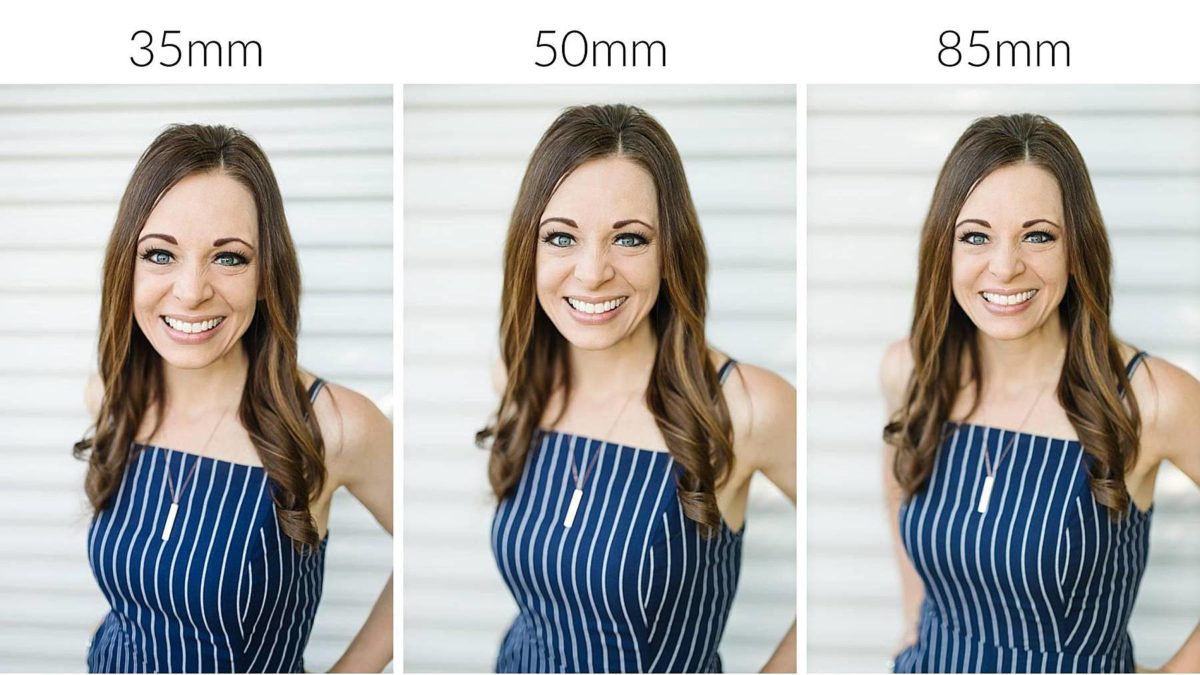
Due to the fact that it slightly stretches the image to allow you to see more, I typically only use this lens horizontally and never use it for up close portrait shots. I also never use this lens for 3/4 body shots or headshots because of the distortion it creates. When used vertically for a headshot, as seen above, the photographer has to stand very close to the subject. Thus, the subject’s forehead lengthens, their nose appears elongated, and their head appears enlarged while the torso appears smaller. If using an even wider lens than the 35mm, such as a 24mm or 18mm, those effects are exaggerated even more. This is simply not the most flattering way to capture a subject. On the plus side, when the 35mm is used horizontally, this lens can showcase a couple within the context of a romantic setting, thus “telling their story” and portraying them interacting within a beautiful context.
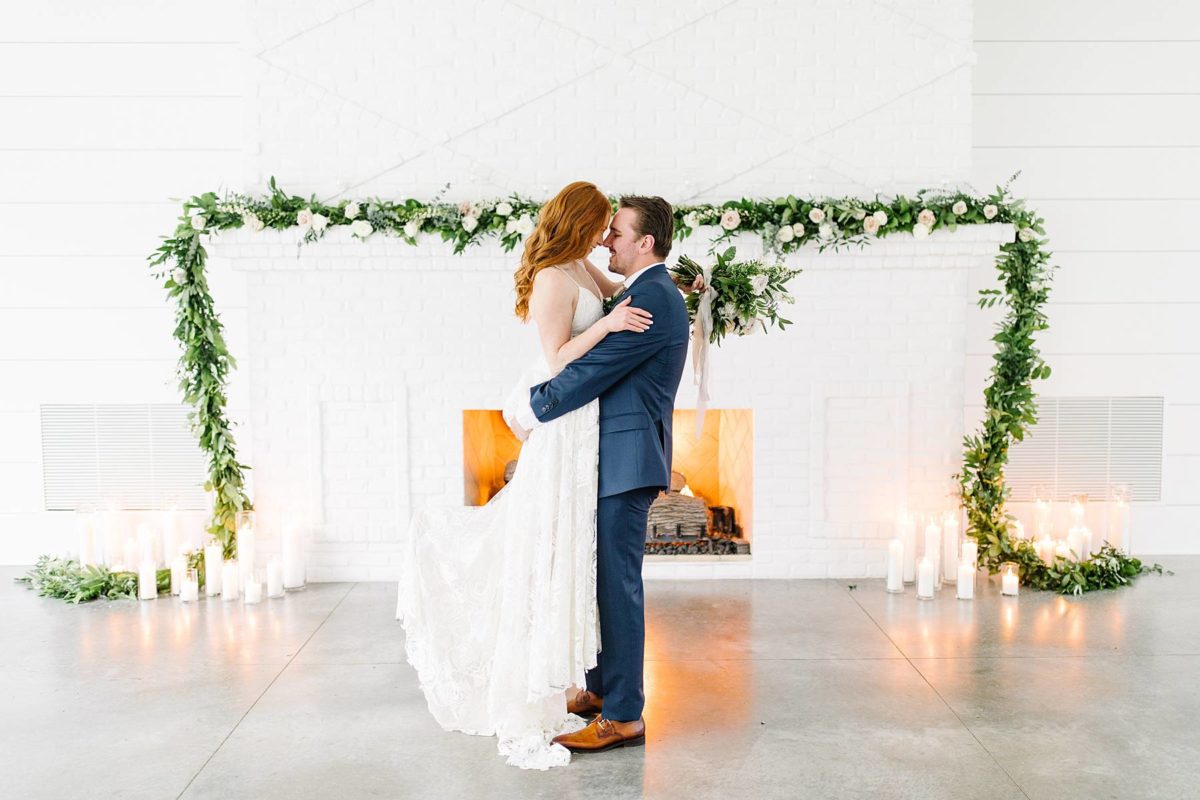
I have found that the 85mm lens, also known as the classic portrait lens, to be my go-to lens for headshots. The lens is designed to preserve and flatter the proportions of the human face. Jaw lines are shortened, the nose is not lengthened, and hair looks more full. Gone is the surreal look of the “floating head” as created when using the 35mm lens. Instead, the 85mm lens produces a much more professional, and proportionally correct image. In the example below, even though the subject didn’t move, her proportions look much more accurate in the third (85mm) photo because she does not appear stretched as she does in the first (35mm) photo.
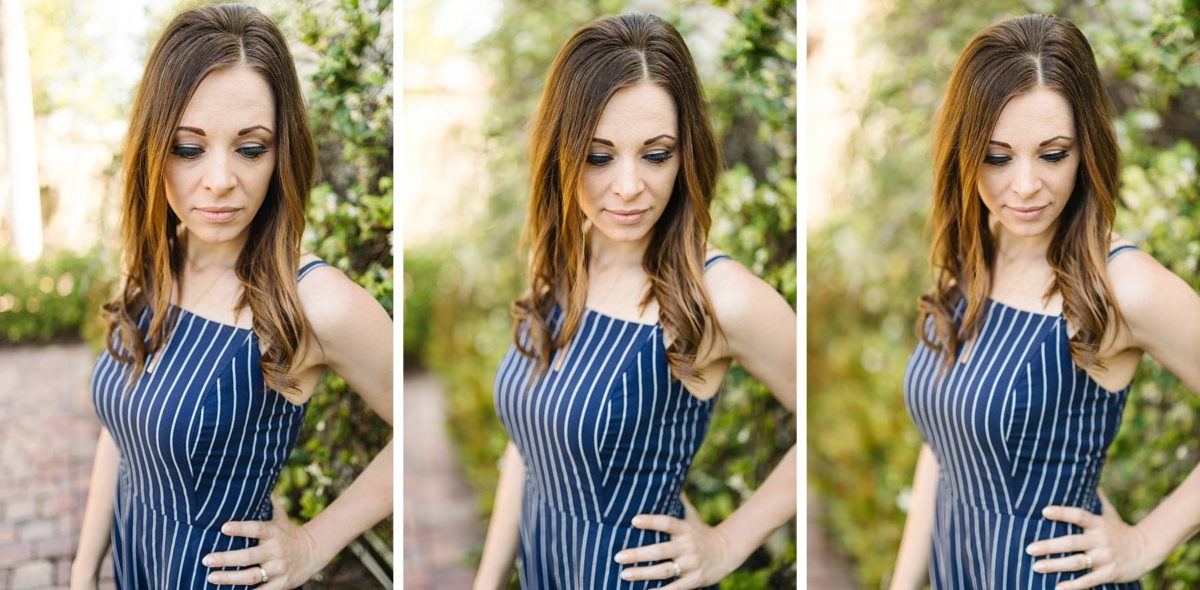
Because the 85mm focal length is more “zoomed in”, the background appears to be “pulled closer” and also appears larger and more blurred. Note that in the side by side comparison above, the sidewalk is visible in the 35mm image but absent in the 85mm image, thus there are less distractions in the 85mm photo as it draws the eye to the subject instead of the context. Even when capturing full body shots, the background is still pulled closer to the subject, and the foreground becomes flattened and doesn’t draw the eye away from the subject. The subject seems to pop out of the photo and appear more three dimensional.
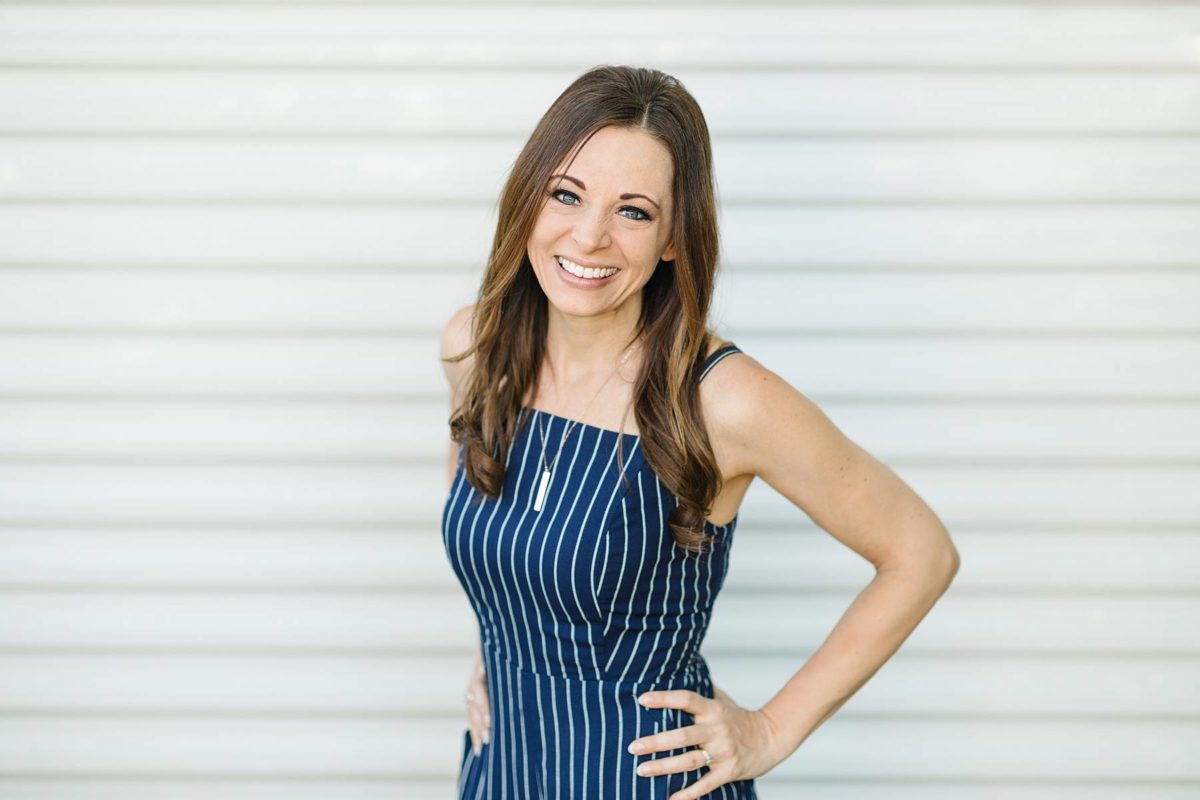
Overall, the 85mm lens is my favorite focal length when it comes to capturing headshots and 3/4 body shots. I highly recommend this focal length as it produces images that are not only proportionally accurate but also distinguishable as professional work!
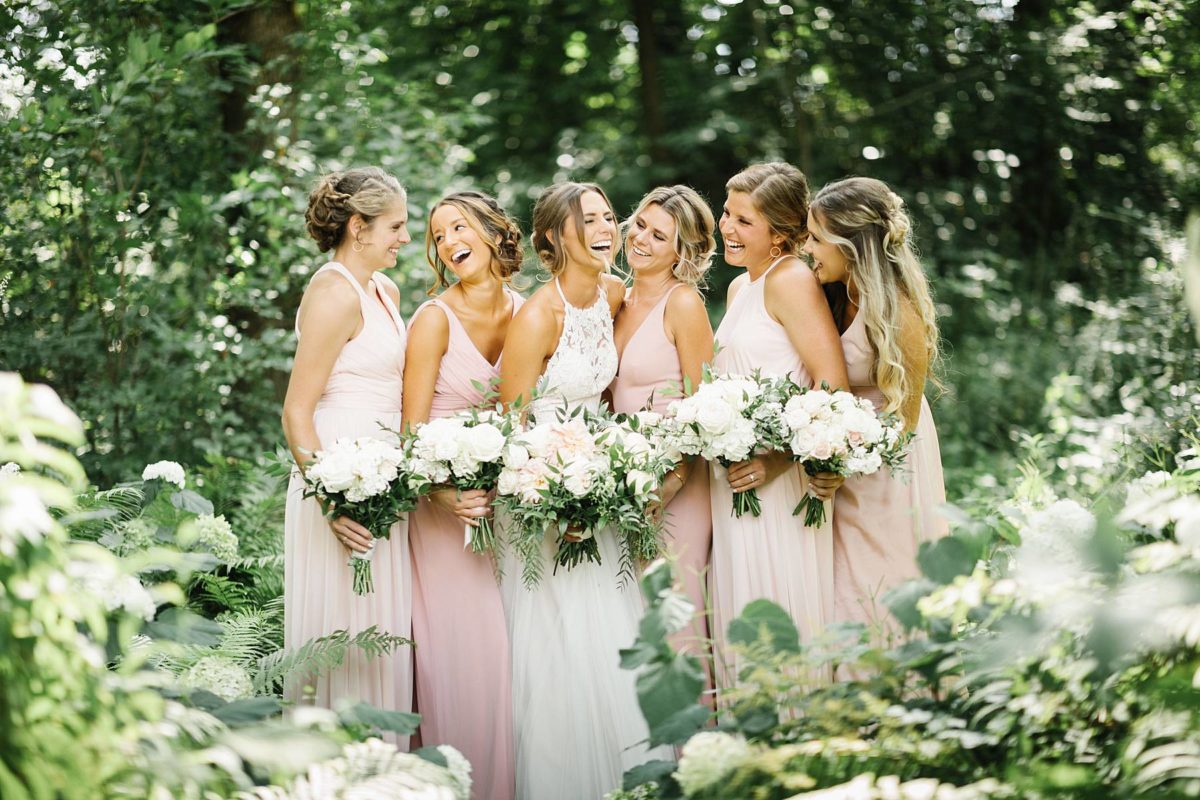
One thing to be mindful of when using the 85mm lens with a very shallow depth of field, is to watch to be sure the focus hits perfectly, especially when photographing a group of people. To ensure everyone’s face is in focus when shooting at f/1.4 (as in the photo above), I line the subjects up so that they are all standing at an equal distance from my lens. I have found that accurate focus is achieved much easier when shooting with the Canon 5D Mark IV in “live view” because it utilizes the camera’s face detection feature. This is even easier with the Canon EOS R and will be even easier with the upcoming Canon EOS R5 as they incorporate eye detection and body tracking for capturing movement.
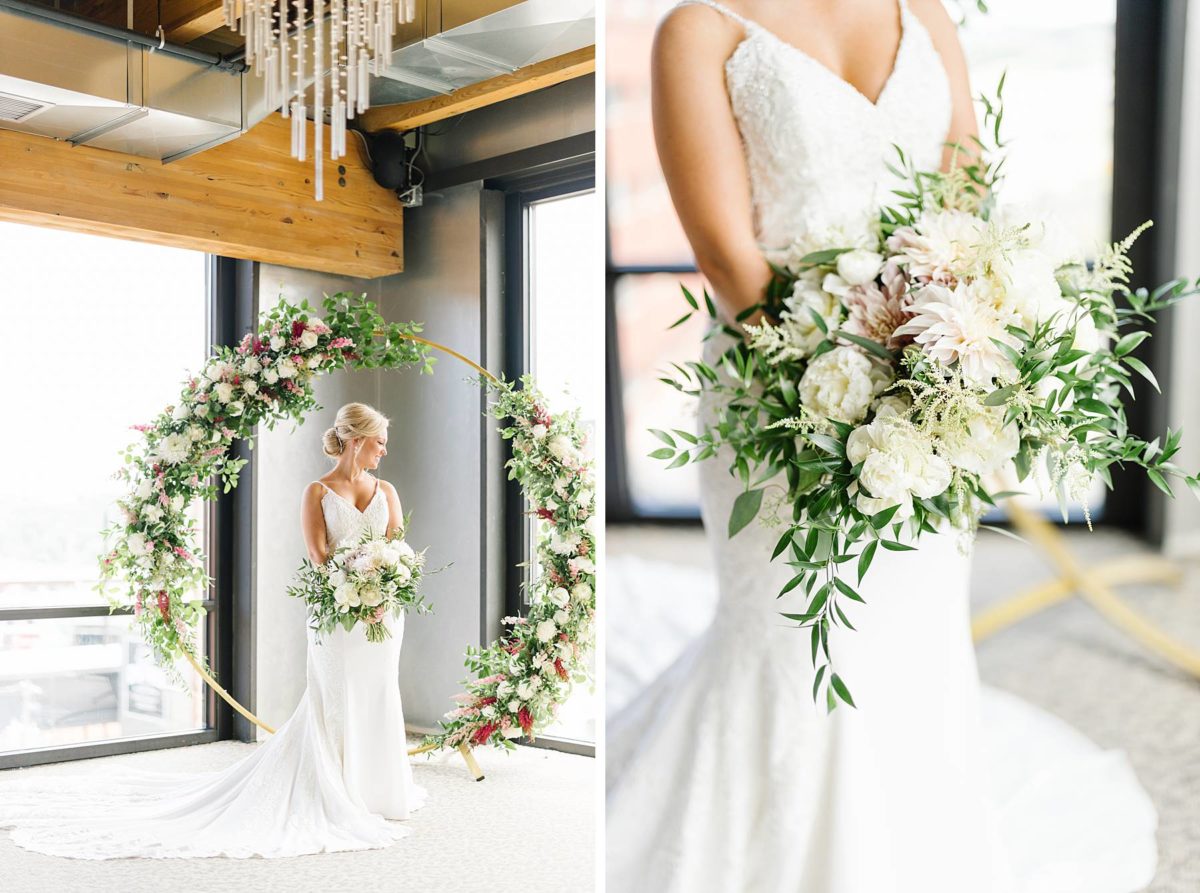
The 35mm, 50mm, and 85mm focal lengths each have their advantages and disadvantages and this is why I highly recommend using all three for different purposes. For me, on a typical wedding day, I use two camera bodies mounted on my Holdfast Money Maker camera strap. The camera bodies I use are the Canon EOS 5D Mark IV and the Canon EOS R. I usually leave my Canon EF 35mm f/1.4L II USM mounted on one camera and either my Canon EF 50mm f/1.2 L USM or my Canon EF 85mm f/1.4L IS USM on the other camera. The double camera setup allows me, as a prime lens photographer, to switch focal lengths quickly without needing to swap lenses. This allows me to capture portraits and simultaneously be ready to capture those quick candid moments!



In other parts of the day, such as the processional, I capture both the bride walking down the aisle and the groom’s reaction to seeing her using the Canon EF 85mm f/1.4L IS USM and the Canon EF 35mm f/1.4L II USM. I also like to use this setup during speeches to be able to capture the speaker as well as the guests’ reactions without needing to move. Each of these lenses are crucial for different scenarios throughout a wedding day and I highly recommend all three for prime lens wedding photographers!
For a detailed video comparison, check out our YouTube review:
Share post on Social